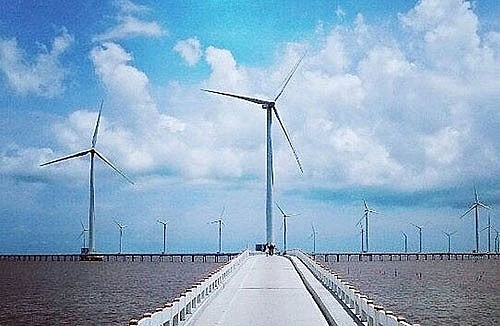New Joint Industry Project launched to cut wind energy costs
 |
| Recent advances in LIDAR technology offer a new way to carry out meteorological measurements at a much lower cost |
Measuring meteorological conditions such as wind speed and turbulence intensity is essential for assessing and verifying the feasibility of new wind energy projects. For example, the data is used in the assessment of wind resources at potential sites as well as to validate both turbine loads and power performance that are required for type certification of new wind turbines.
Currently, industry standards from DNV GL and the IEC specify that these measurements must be made using so-called meteorological masts (met masts) – tall towers equipped with cup and sonic anemometers. However, installing met masts is very costly, particularly on offshore sites.
Recent advances in LIDAR technology offer a new way to carry out the meteorological measurements needed for turbine certification and site assessment at a much lower cost. The use of floating LIDARs also makes it possible to carry out measurements in previously inaccessible locations such as deep-water sites and enable more accurate energy yield assessment. As a result, LIDAR has the potential to help deliver significantly cheaper wind energy – both onshore and offshore.
| The use of floating LIDARs also makes it possible to carry out measurements in previously inaccessible locations such as deep-water sites and enable more accurate energy yield assessment. |
Consequently, LIDAR is becoming the preferred technology for wind resource measurements, and various methods for deriving TI information from LIDAR measurements have been proposed in research settings.
However, none of these methods have been verified and adopted at international standards, therefore, LIDAR measurements are not widely accepted by certification bodies, insurers, or authorities. By creating a Recommended Practice for LIDAR that is supported by players throughout the industry, the DNV GL-driven JIP aims to drive acceptance of LIDAR measurements and help reduce costs for turbine OEMs and wind project developers.
“Launching this Joint Industry Project is an important step in making LIDAR-measured turbulence intensity certifiable and accepted by different wind energy stakeholders,” says Kim Mørk, executive vice president Renewables Certification at DNV GL.
“As a certification body, it is our goal to support the wind industry in enabling cost-effective and reliable measurement of TI based on LIDAR data. The positive feedback we have already received from potential partners shows the strong desire within the industry for a new guideline.”
The JIP is intended for wind turbine and LIDAR manufacturers, wind farm developers, universities and research facilities, consultants and measurement institutes that are looking for guidelines to use LIDAR TI measurements for different applications.
What the stars mean:
★ Poor ★ ★ Promising ★★★ Good ★★★★ Very good ★★★★★ Exceptional
Related Contents
Latest News
More News
- Heavy industries set for pilot greenhouse gas quotas (December 25, 2025 | 10:00)
- Swedfund invests in MSME growth and climate action in Vietnam (December 19, 2025 | 11:42)
- GreenYellow brings solar energy to light up remote schools in Tuyen Quang province (December 19, 2025 | 08:00)
- Charge+, Grab partner to develop EV charging network in Vietnam (December 18, 2025 | 17:11)
- Linking sci-tech and innovation to Vietnam’s net-zero future (December 18, 2025 | 14:31)
- Driving double-digit growth through green and circular transformation in Vietnam (December 17, 2025 | 09:00)
- Standard Chartered and ACCA deepen collaboration to develop Vietnam’s talent for a sustainable future (December 15, 2025 | 18:18)
- Schaeffler reports strong early output from Dong Nai solar project (December 12, 2025 | 15:16)
- Forestry conference highlights biodiversity and sustainability goals (December 09, 2025 | 13:35)
- Home Credit honoured among top 10 sustainable companies in trade and services (December 09, 2025 | 12:18)

 Tag:
Tag:



























 Mobile Version
Mobile Version